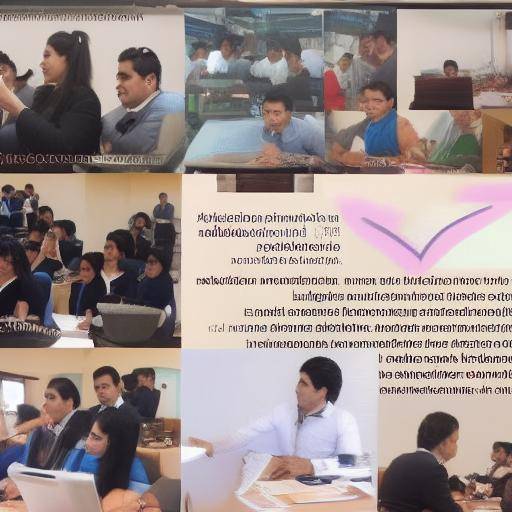
In today ' s world, financial education is an essential skill for personal and professional success. Instilling these knowledge from an early age is crucial for children to develop a good understanding of how to manage money. However, maintaining steady financial education in children can be a challenge for many parents and educators. In this article, we will explore practical and effective advice to promote sound financial education in children, focusing on regularity, reinforcement and learning.
Regularity: The basis of financial education
Regularity in the teaching of financial education is fundamental to ensuring that concepts and habits are rooted in the minds of children consistently. Here are some strategies to maintain regular financial education for children:
- It incorporates lessons of financial education in daily life: From shopping to weekly tables, find daily opportunities to teach your child about the value of money, savings and financial decision-making.
- Sets a routine: Give a regular time every week to review financial concepts with your children. This could include reviewing the balance of their reach, discussing savings targets, or even studying cases of financial situation study.
- Models healthy financial behaviors: Children learn by observing. If you show responsible financial habits and make smart decisions with money in front of them, you'll be setting a powerful example.
Strengthening: The key to consolidating financial knowledge
Constant reinforcement is essential to consolidate and strengthen financial concepts in the minds of children. Here are some effective strategies for strengthening financial education:
- Implement games and activities related to money: Table games focused on money, such as Monopoly, can be excellent tools to teach about investment, money management and the value of savings.
- Use rewards and recognition: It creates a system of rewards for reached financial goals, such as saving a certain amount of money or avoiding unnecessary expenses. This positively reinforces responsible financial behaviour.
- Brinda constructive feedback: Encourage children to make financial decisions and then provide constructive feedback on such decisions helps them to learn actively and effectively.
Learning: Encourage curiosity and knowledge financeiro
Continuing learning is essential for the development of financial education in children. Here are some strategies to promote learning in this area:
- Encourages curiosity: Encourage children to ask questions about money, savings and investment. These questions can be opportunities to encourage discussion and learning.
- Search for educational resources: It uses books, videos and educational materials focused on financial education to provide children with additional information and diverse perspectives on financial issues.
- Promotes practical experiences: Allowing children to manage their own money, such as managing a canny or helping with small financial decisions, gives them an invaluable practical experience.
Conclusion
By following these councils and maintaining regularity, reinforcement and learning approach, parents and educators can play a significant role in developing sound and consistent financial education in children. In doing so, they will be laying the foundations for a more solid and secure financial future.
Frequently asked questions about financial education in children
How can I teach my child about the importance of savings in a way that you understand?
Teaching children savings can be fun and educational. Instead of simply telling them to save, integrate them in the process of setting savings goals for something they want, like a toy a book. This will help you understand the relationship between savings and the possibility of getting something you want.
How old is it to start teaching financial education to children?
There is no specific age to start teaching financial education, but the sooner you start introducing basic concepts about money and savings, the better. Children can understand simple financial concepts from 3 to 4 years, and as they grow up, you can introduce more complex concepts.
How can I teach my children about the value of work and money?
An effective way is to involve children in household chores that will bring an economic reward, such as giving them a roundtable in exchange for performing certain tasks at home. This connection between work and money will teach you the value of effort and reward.
Is it important for children to understand financial concepts from small?
Yes, it is essential that children understand financial concepts from an early age, as this provides them with the basis for making informed and accountable financial decisions in the future. It also fosters a healthy financial mentality from the beginning.
How can I teach my children to make smart financial decisions?
An effective approach is to enable children to make financial decisions in a controlled environment and to provide feedback on such decisions. In this way, they will learn from their mistakes and successes, which will develop their ability to make smart financial decisions over time.
What additional resources can I use to teach financial education to my children?
In addition to educational books and materials, there are applications and games specifically designed to teach children about finance in an interactive and entertaining way. These complementary resources can be excellent tools to strengthen the financial education of children.
By following these advices and responding to frequent questions, parents and educators can play a significant role in the development of sound and consistent financial education in children.






















































